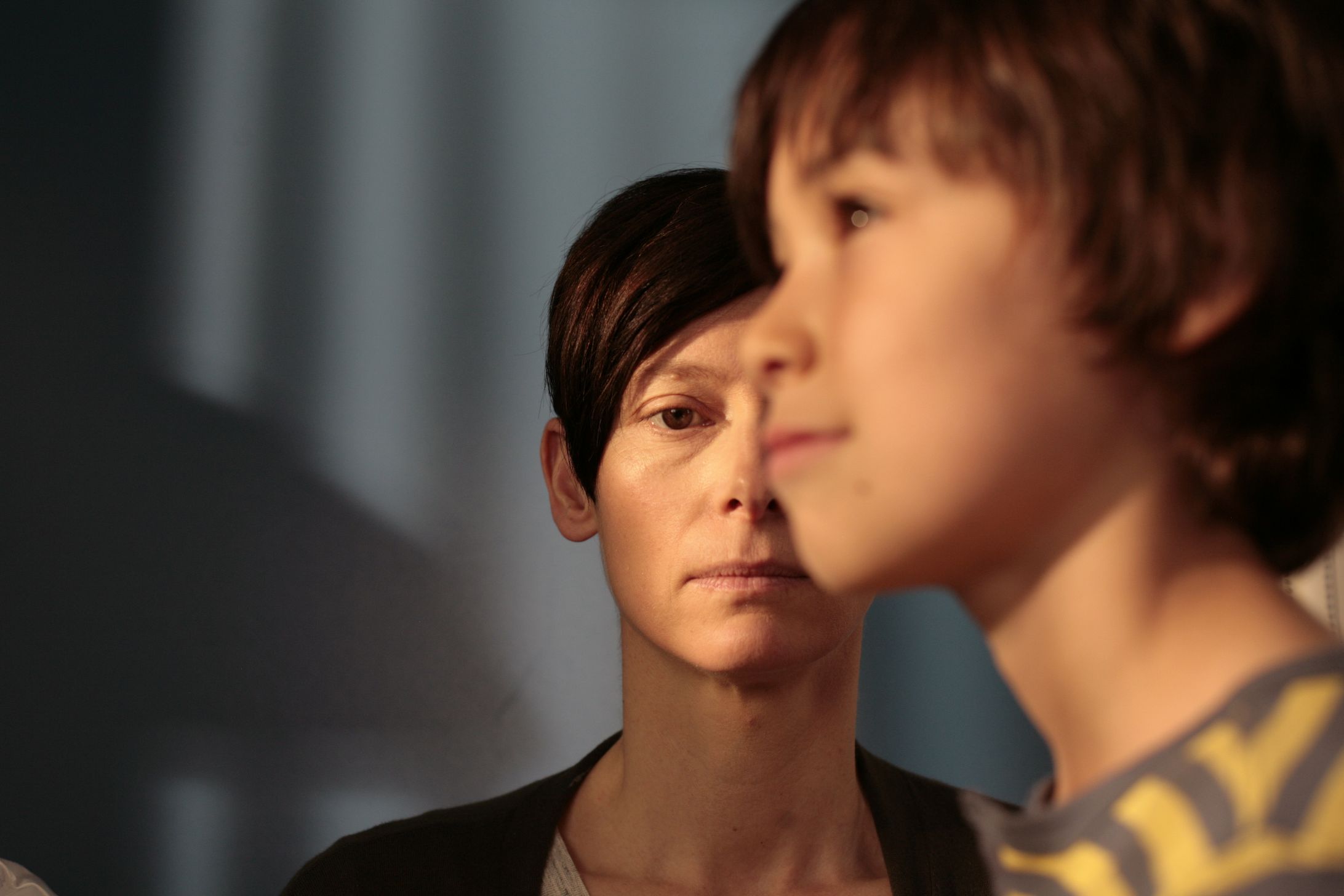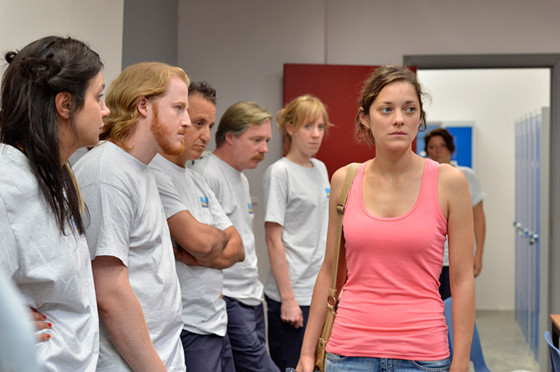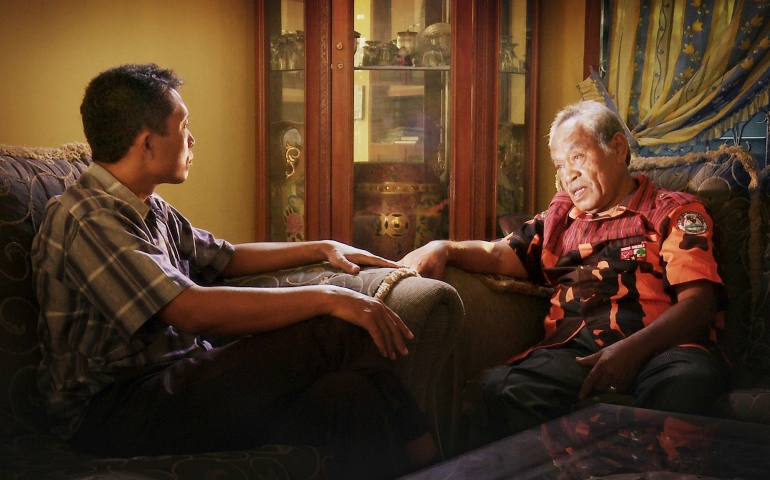
Each month, Netflix adds and subtracts to its impressive list of movies available to stream. While the service’s internal algorithms do their best to suggest films catered to the taste of each subscriber, it can still be daunting to choose from the extensive collection.
So, here is a list of 10 “Hidden Gems” found on Netflix. By no means exhaustive, these movies offer a glimpse into the diverse selection offered by the streaming service.
1. The Place Beyond the Pines

No one working in Hollywood today quite captures the ethos of the rebel quite like Ryan Gosling. Channeling the intransigent spirit of James Dean and (a young) Martin Sheen before him, Gosling exudes a coolness that can’t be taught or faked. And in no film besides maybe Drive is that truer than in The Place Beyond the Pines.
Gosling plays Luke Glanton, a deadbeat working as a stuntman in a small circus. While touring with the show, he reconnects with former lover Romina, played by a doe-eyed Eva Mendes. Luke learns that he has a child by Romina and the two eventually get back together, only for their relationship to succumb to the menacing violence hidden in Gosling’s character. This sequence provides a foundation for the rest of The Place Beyond the Pines, which unfolds as a triptych of stories revolving around Gosling and Avery Cross, played by Bradley Cooper as a sly and ambitious police officer.
Director Derek Cianfrance never lets violence drift too far away from the periphery of his camera, even in sequences where no action manifests. A particular scene where a few crooked cops almost corner Avery in a forest attests to the strength of Cianfrance’s ability to administer intensity without any physical conflict.
That’s not to say that the film is shallow beyond its devotion to action. Topics like inherited sin and paternal responsibility receive extended attention by the end of the third sequence. But what really makes The Place Beyond the Pines stick are its heart-pounding scenes: bank robberies and high-speed chases, drug-infested ragers, standoffs at gunpoint, even sequences like the aforementioned one, where violence never arrives but lingers enticingly on the fringes.
2. Things to Come

The flashier Elle garnered more attention for Isabelle Huppert in 2016 than the comparatively quieter and more reflective Things to Come. While the former focuses on themes of revenge and gender politics, the latter centers on more amorphous concepts like unexpected freedom and the notion of a guaranteed future. What follows is a movie more entrenched in French realism, and all the better for it.
Huppert plays Nathalie Chazeaux, a philosophy professor whose marriage to Heinz, also a professor of philosophy, appears unthreatened. While the two clearly have intellectual differences (Nathalie teases Heinz for his affinity toward Kant’s moralist “the starry heavens above me” aphorism) and hints of Heinz’s jealousy over Nathalie’s friendship with a former student pop up during the film’s opening scenes, neither seem to seriously endanger their marital bond.
Until Heinz announces to Nathalie that he has been seeing another woman and plans to move in with her. The way director Mia Hansen-Løve handles this scene, as well as the build-up to it, is the best way to define the differences between Things to Come and other films of its ilk. The climax of Heinz’s announcement is revealed in a previous scene, where his daughter confronts him about the affair she correctly presumes he is having.
The viewer then is privy before the bombshell hits Nathalie. And when it finally lands, it arrives not with a bang but a whimper. Nathalie neither cries nor screams. She fully expected to be with Heinz her whole life, but the shock of those assumptions dying sets in over the course of the film’s second half and not solely on that one scene. No contrived drama or twist. Just a blunted climax followed by a gentle denouement.
The value in Things to Come then becomes apparent. Ostentatious narrative adornments never muddle its fluidity. Huppert plays Nathalie with a subtlety that fits perfectly with this muted script and Hansen-Løve’s reserved direction style. Elle may be flashier, but Things to Come’s pace and play leave a more indelible, if not immediately noticeable, mark.
3. Two Days, One Night

Another film rooted in neorealism, Two Days, One Night stars Marion Cotillard as Sandra, an industrial worker in Belgium dealing with anxiety and depression. Its discussion of mental illness and workplace relationships play out spectacularly during Sandra’s fight over a weekend to keep her job and support her family.
The movie opens with Sandra learning that her co-workers have voted for her firing in favor of bonuses for themselves while on a leave of absence. Appearing lost, she tells herself not to cry, but the emotional damage feels insurmountable.
A helpful friend who also works at the solar panel factory gives Sandra a prospect of winning her job back, however. Her bosses have agreed to a revote; if Sandra can convince more than half of her 16 co-workers to forfeit their bonuses and let her stay, she can keep her job. The ensuing two days and one night before the vote allow the film to explore its themes and the depths of Sandra’s character.
At times, Sandra wants to give up. Her anxiety appears too severe to overcome, leading her to take pill after pill of prescription medication. Cotillard plays her with appropriate emptiness and histrionics when the role demands it, as the character careens back and forth between desperation and hopefulness.
Some co-workers act standoffish toward Sandra, others act outright callous to her request. Amazingly, she perseveres and visits all 16 of them, learning about her untapped inner strength and about the humanity in those around her. The result of the vote eventually loses its significance, and Sandra learns valuable lessons on gratitude, sympathy and hope. This, combined with Two Days, One Night’s mature depiction of mental illness, makes the film a perfect Netflix hidden gem.
4. The Look of Silence

Joshua Oppenheimer’s The Act of Killing concentrates on two of the perpetrators of the Indonesian mass killings of 1965 and 1966. These killers, Anwar Congo and Adi Zulkadry, revisit the old sites of their executions as well as retell stories of their involvement in the right-wing-endorsed murders. The documentary blurs the lines between reality and fiction as Congo and Zulkadry reimagine their killings in the form of gangster movies and musicals. Guilt is a nebulous concept to the two. The Look of Silence, Oppenheimer’s companion film to The Act of Killing, gives no such leverage to its subjects.
The Look of Silence contrastingly revolves around Adi Rukun, an optometrist and brother of one of the victims of the Indonesian mass killings. His mission is to confront those involved in the murder of his brother under the pretense of an eye exam. Unlike in The Act of Killing, guilt is a palpable reality to those Adi addresses with the news of his brother’s grizzly death. Some point to fact to dissolve their blame. After all, a few estimates put the total death count at upwards of 3 million people, and Adi’s brother was just one of them. Others scramble to deny their culpability while accosted by both Adi’s statements and the gaze of Oppenheimer’s cameras.
In either response, the effect is markedly different from Congo and Zulkadry’s confessions in The Act of Killing. The two only ever face the inner remorse they feel. All of their reported 1,000 victims aren’t alive to throw accusations at them. Rationalizing their actions through movies doesn’t represent an admission of wrongdoing but a way to appease their internal psyche. Those who killed Adi’s brother don’t receive that luxury, at least not in The Look of Silence.
Though, sympathy should be spared for Adi and his family, who still live in a militaristic and oppressive country whose government openly canonizes figures like Congo and their actions during the mid-1960s. Locally, Adi, his mother and his father realize they live in a community of murderers and accessories and must accept the fact that those who killed their brother and son are all around them.
While The Act of Killing provides background and much-needed shock to the killings, (Congo and Zulkadry have no qualms recounting all the graphic details of their deeds) The Look of Silence gives a picture of the aftermath via an insular depiction of one family’s life-defining loss of a relative. Its consistent vision and loyalty to the harrowing subject matter make The Look of Silence one of the most provocative documentaries of the last decade.
5. Phoenix

World War II continues to be an epicenter for the movie industry, even more than 70 years after its conclusion. It proves to be a spring of unparalleled drama and humanity-based psychological play for directors year in and out. As such, some World War II movies end up blurring together. Phoenix is not one of those movies.
Phoenix, one of the most original World War II-based films in years, follows Nelly Lenz. Nelly survived living in a concentration camp during the Holocaust, though not without taking a bullet to the face. Needing facial reconstruction surgery, she returns to her native Berlin for the procedure.
Helped along by her friend Lene, Nelly still feels incomprehensible trauma, both from her time in the camp and in her discontent for the results of the facial surgery, which leaves her countenance looking different from her original self. On top of all this, Nelly’s husband Johnny is still in town, and Lene suspects he was the one who revealed Nelly to the Nazis.
What plays out can best be described as a Vertigo-inspired drama involving ruminations on identity, greed, hope and betrayal. While the actions of the film take place post-Holocaust, the shadow it casts over Phoenix is undeniable. Lene wishes to flee Berlin and emigrate to the newly created Palestine with Nelly. The potential relief of a state created for the safety of the ethnically Jewish, however, is lost on the deeply distressed Nelly.
Played with amazing grace and depth by Nina Hoss, the Holocaust survivor looks for hope in tracking down her husband instead. The physical and psychological transformation Nelly undergoes both before the start of Phoenix and during its rising action, affecting her, Johnny and Lene, pan out with a deft pace and unnerving quietness rarely seen in most movies, let alone ones involving World War II.